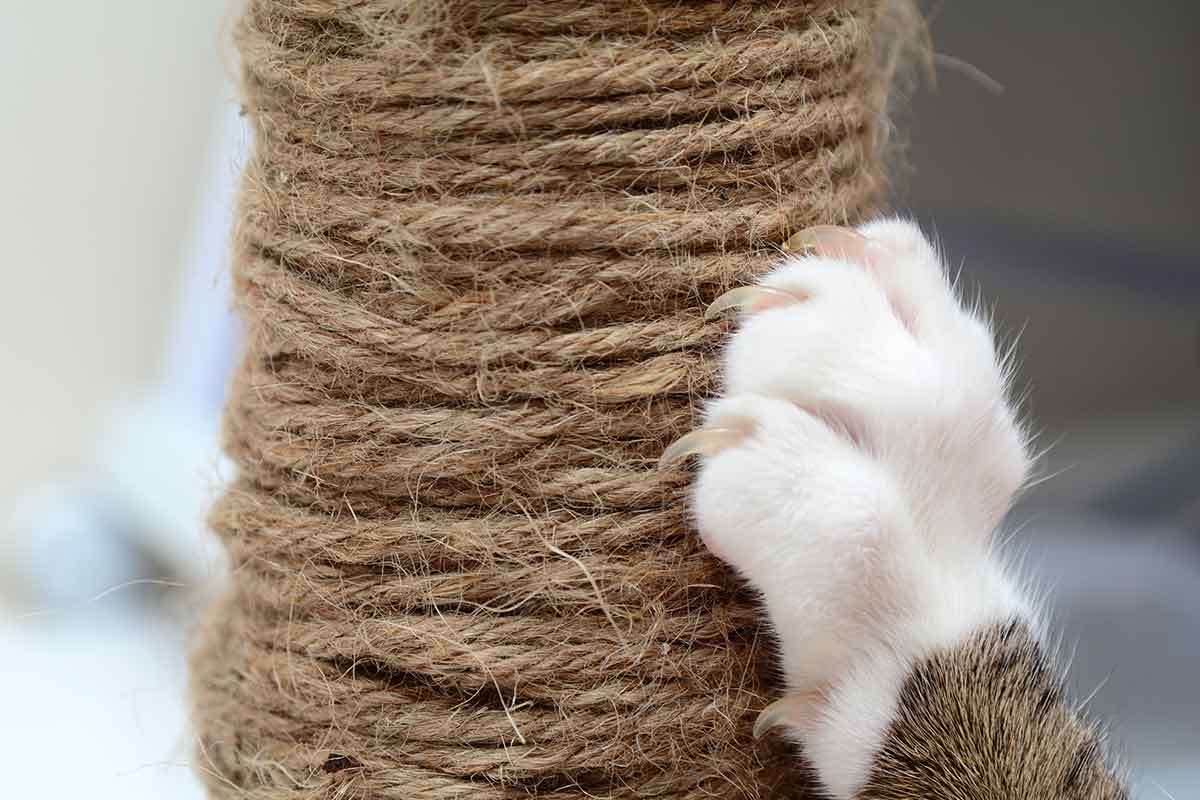After fits and starts, the momentum to ban declawing of cats is building, supported by veterinary hospitals and associations, and legislation that has been passed in cities and states.
Most recently, Banfield, VCA, and BluePearl veterinary hospitals, a chain of nearly 2,000 clinics owned by Mars Inc., will no longer declaw cats as elective surgery. The American Veterinary Medical Association and the American Association for Feline Practitioners, under the guidance of the Paw Project, have updated their policy statements, and New York became the first state to ban declawing.
Declawing is the removal of claw and the first bone of each toe. In human terms, it’s comparable to removing the fingertips at the first knuckle. Behavioral problems may result, such as biting or increased nervousness and refusal to use the litter box. Declawing may result in chronic pain, loss of balance, change of gait, and arthritis as the cat ages; cats walk on their toes, not flat on their feet like humans, so once a cat is declawed she is walking right on the amputation sites. In some instances claws grow back and bone fragments left behind add to the painful process.
And declawed cats must stay indoors because they are defenseless against predators.
The Paw Project
The Paw Project’s mission is to educate the public about the negative effects of declawing, promote abolition of the practice, and rehabilitate cats who have been declawed. The organization has worked with municipalities and states, the American Veterinary Medical Association, and the Canadian Veterinary Medical Association to bring awareness to problems associated with declawing. The Paw Project was instrumental in passing legislation to prohibit landlords from requiring that tenants’ cats be declawed and worked to legally ban declawing of exotic cats in California.
Banfield, VCA, and BluePearl End Declawing
Banfield’s position statement on declawing says: “Every medical procedure supported by our practice has been put in place with the health and wellness of pets in mind and, based on this, we do not support the elective declawing (removal of normal digits) of any animal. Current evidence does not support the use of elective declawing surgery as an alternative to relinquishment, abandonment, or euthanasia.”
This is the only exception: “Declawing is determined to be medically necessary as part of a comprehensive treatment plan to relieve pet pain or illness.” And with that exception, Banfield says the procedure must be reviewed with the client, explaining possible complications and post-operative care. “Medically appropriate use of anesthetics and analgesics and adherence to careful surgical and post-surgical protocols” must be followed.
In February, VCA announced that it will no longer do elective declawing. Its policy states: “Current evidence does not support the use of elective declawing surgery as an alternative to relinquishment, abandonment, or euthanasia.” The exception is the same as Banfield’s, as is the need for proper surgical protocols.
BluePearl did not publish its declawing position on its website, but as part of the Mars Petcare Company, it adheres to the same principles.
AVMA, AAFP Update Policies
Both AVMA and AAFP encourage veterinarians to educate clients about the effects of declawing on cats, stressing that scratching is normal behavior that is inherited and learned. Both organizations stop short of totally condemning the procedure.
In January, responding to proposed legislation, AVMA updated its policy, discouraging declawing, but leaving the decision up to individual veterinarians. It seems to be backtracking on its previous position, which said the procedure should be a last resort but focused on encouraging client education.
The AAFP strongly opposes declawing and says it’s the obligation of veterinarians to provide owners with alternatives and education about the procedure.
Municipal and State Bans
At least 21 countries now ban declawing, but the U. S. has been slow to act.
The Paw Project was instrumental in enacting anti-declaw legislation in several California cities: West Hollywood in 2003 with Los Angeles, San Francisco, Burbank, Santa Monica, Berkeley, Beverly Hills, and Culver City following in 2009.
But it wasn’t until 10 years later that New York became the first state to ban declawing; Governor Andrew Cuomo signed legislation in July 2019. However, New Hampshire legislators in the House voted down a bill to ban declawing in February. Florida, Arizona, West Virginia, and Rhode Island are considering declawing bills. New Jersey is revisiting a declaw bill after a previous failed attempt.
A cat’s claws are part of her original equipment and scratching is natural behavior. Claw clipping should be a part of routine care and there’s a wide variety of scratchers to help channel the instinct. Don’t be stingy about the number and variety; do not complain about your cat scratching the damask sofa when there’s just one tired scratcher hidden in the corner of the room. The tools are at hand to keep you both happy.
This article was reviewed/edited by board-certified veterinary behaviorist Dr. Kenneth Martin and/or veterinary technician specialist in behavior Debbie Martin, LVT.








